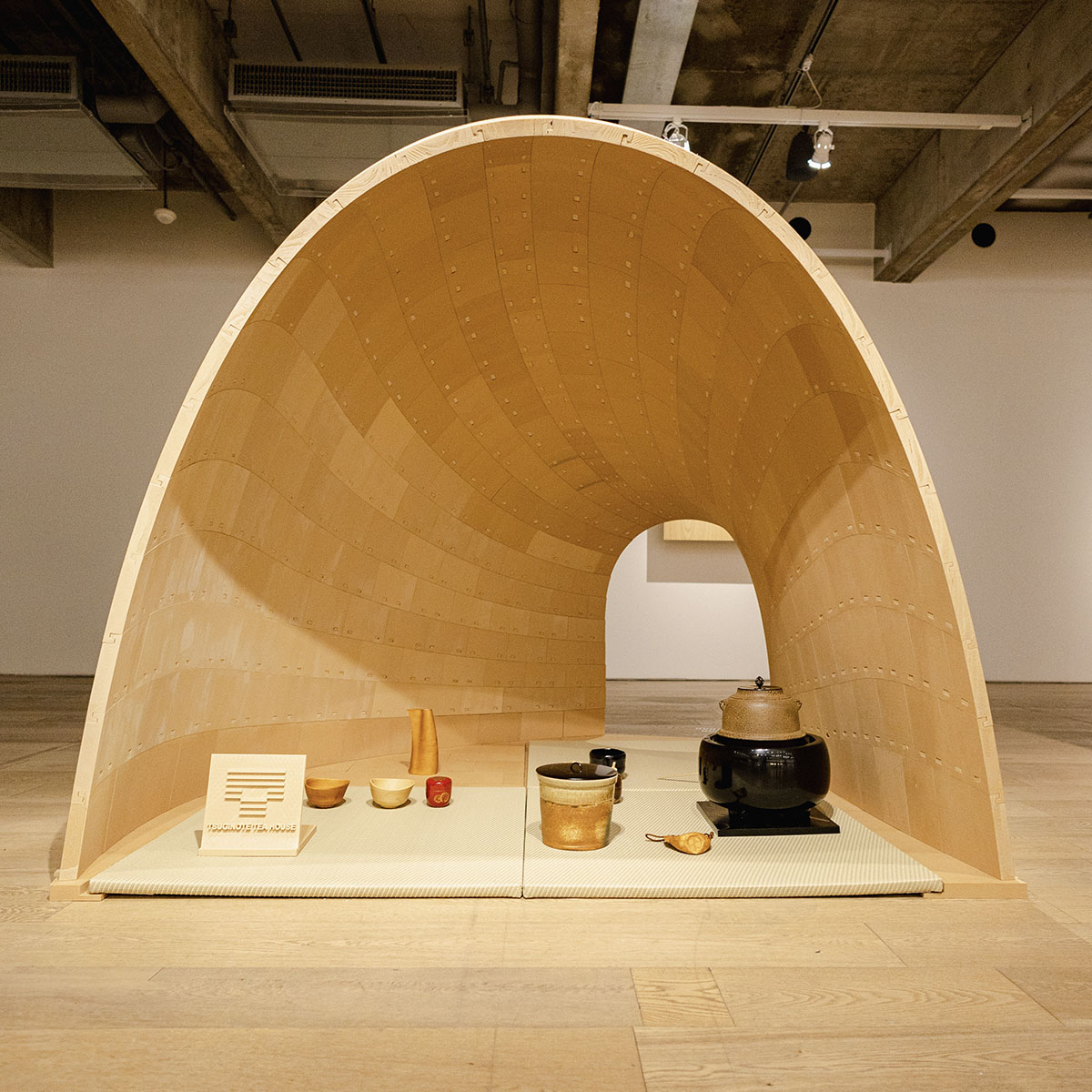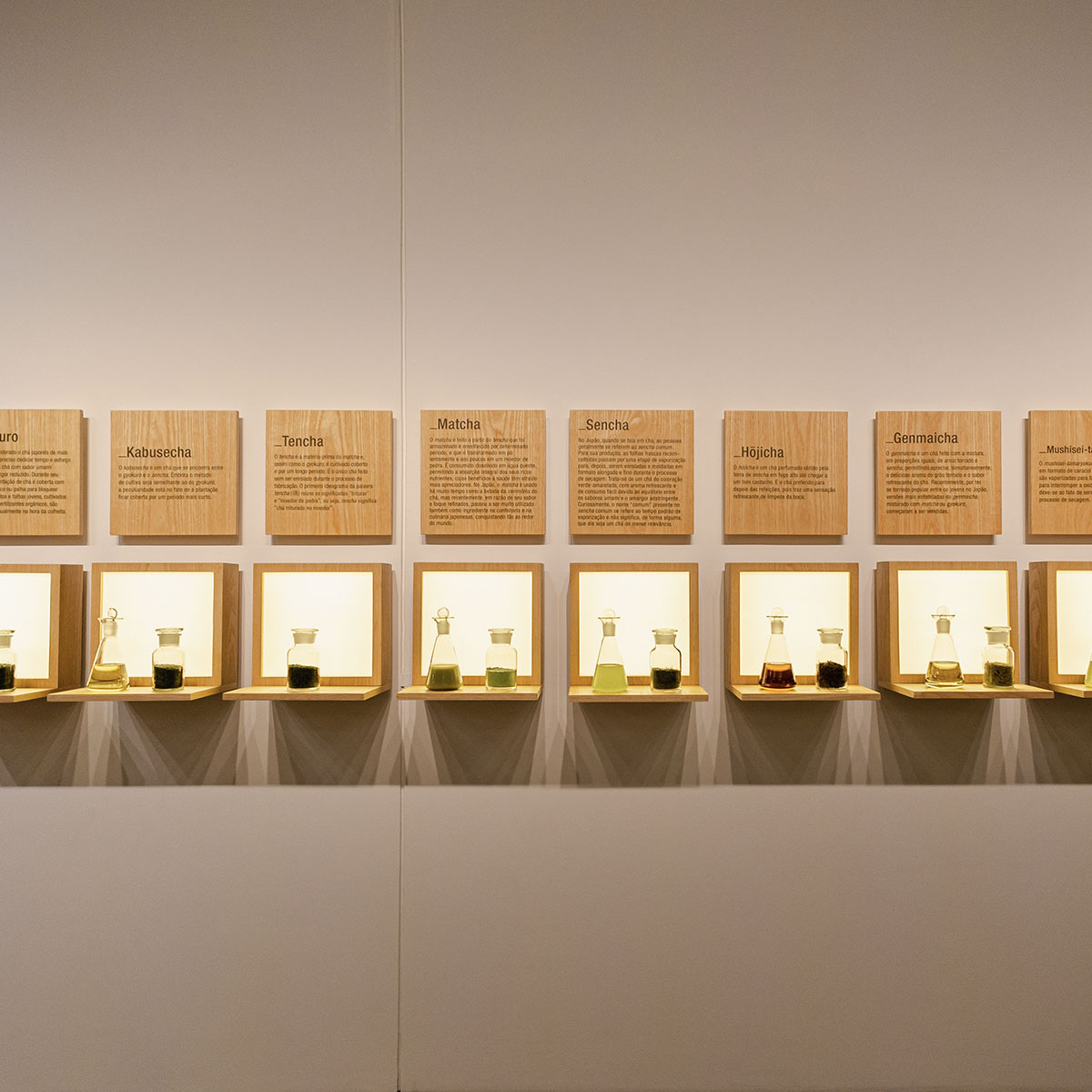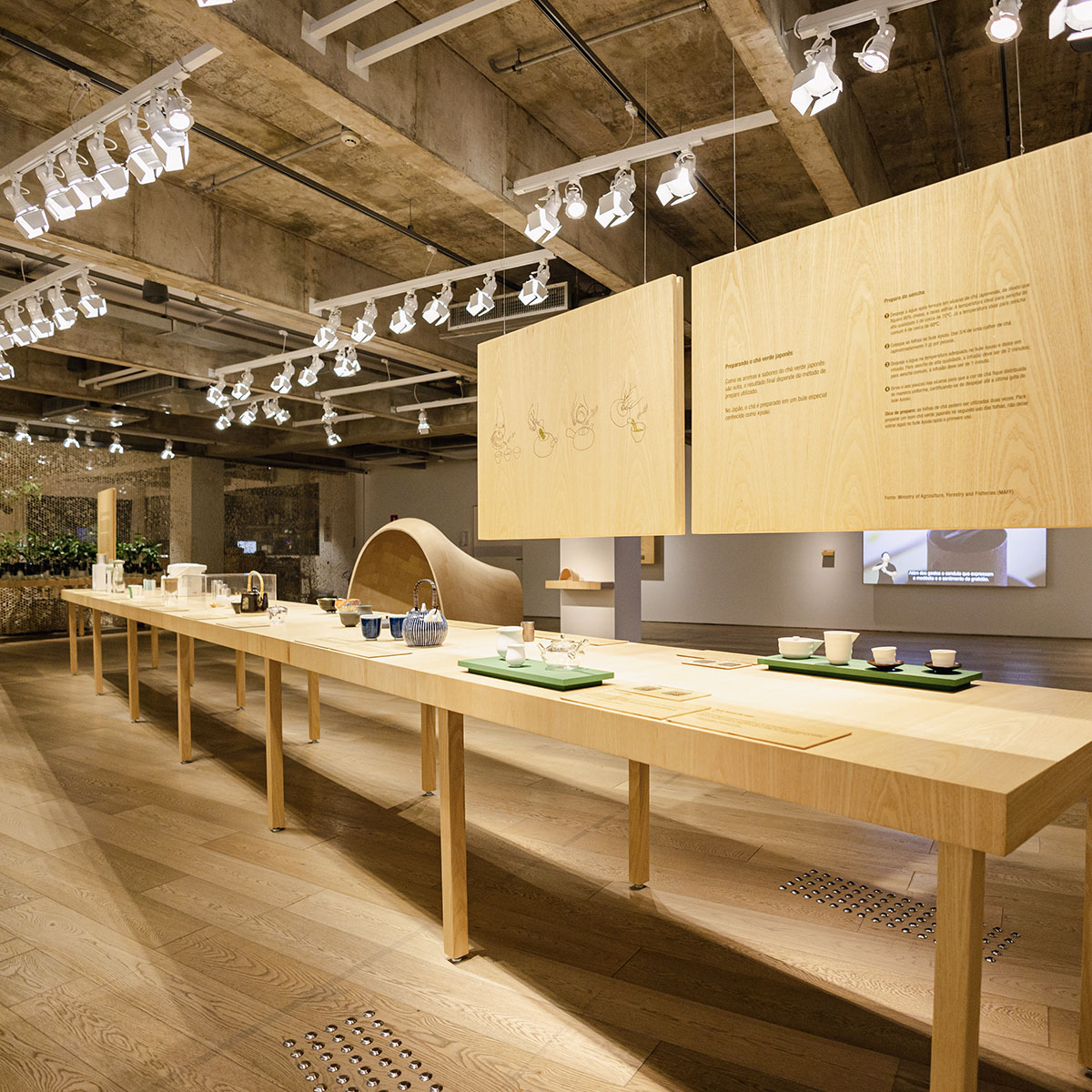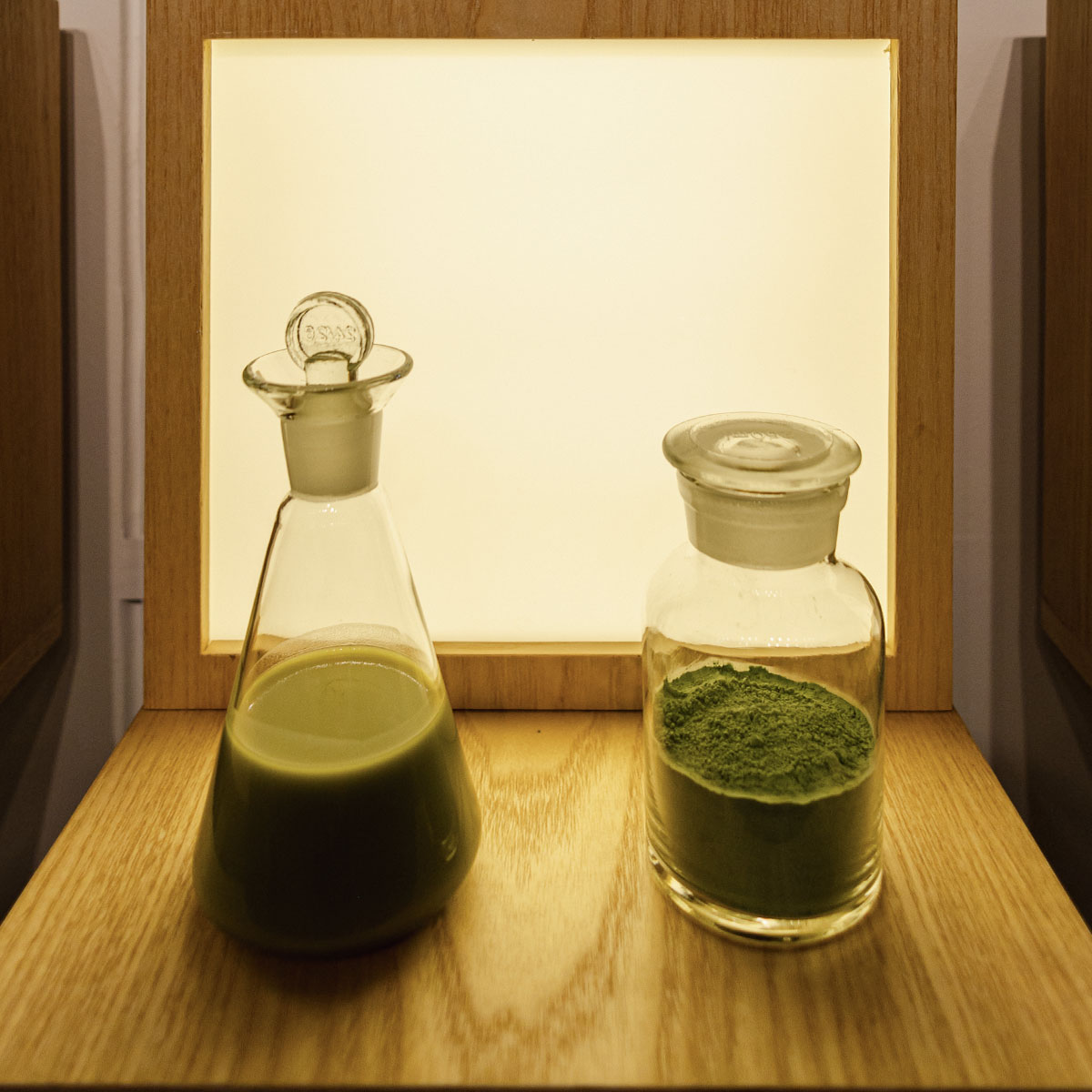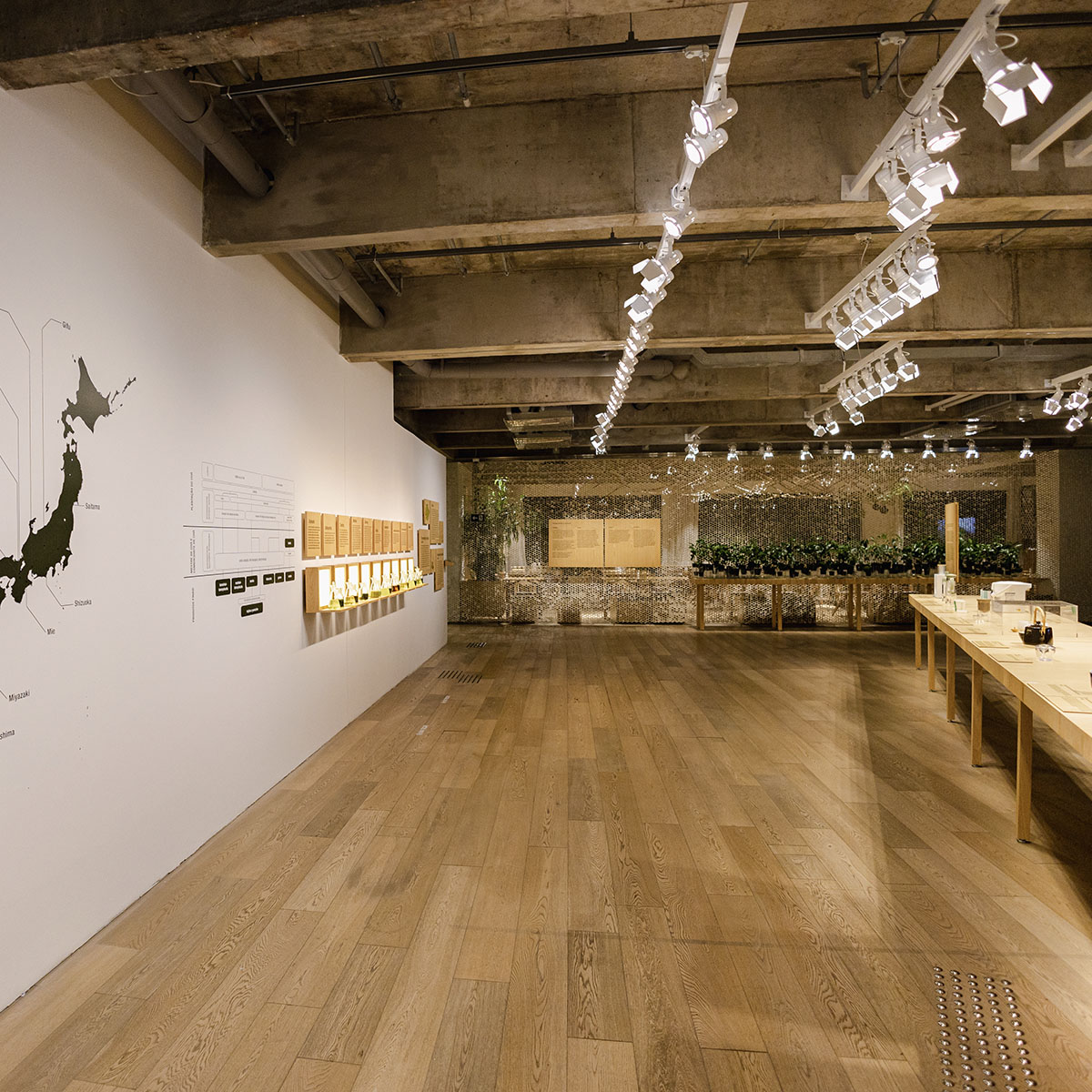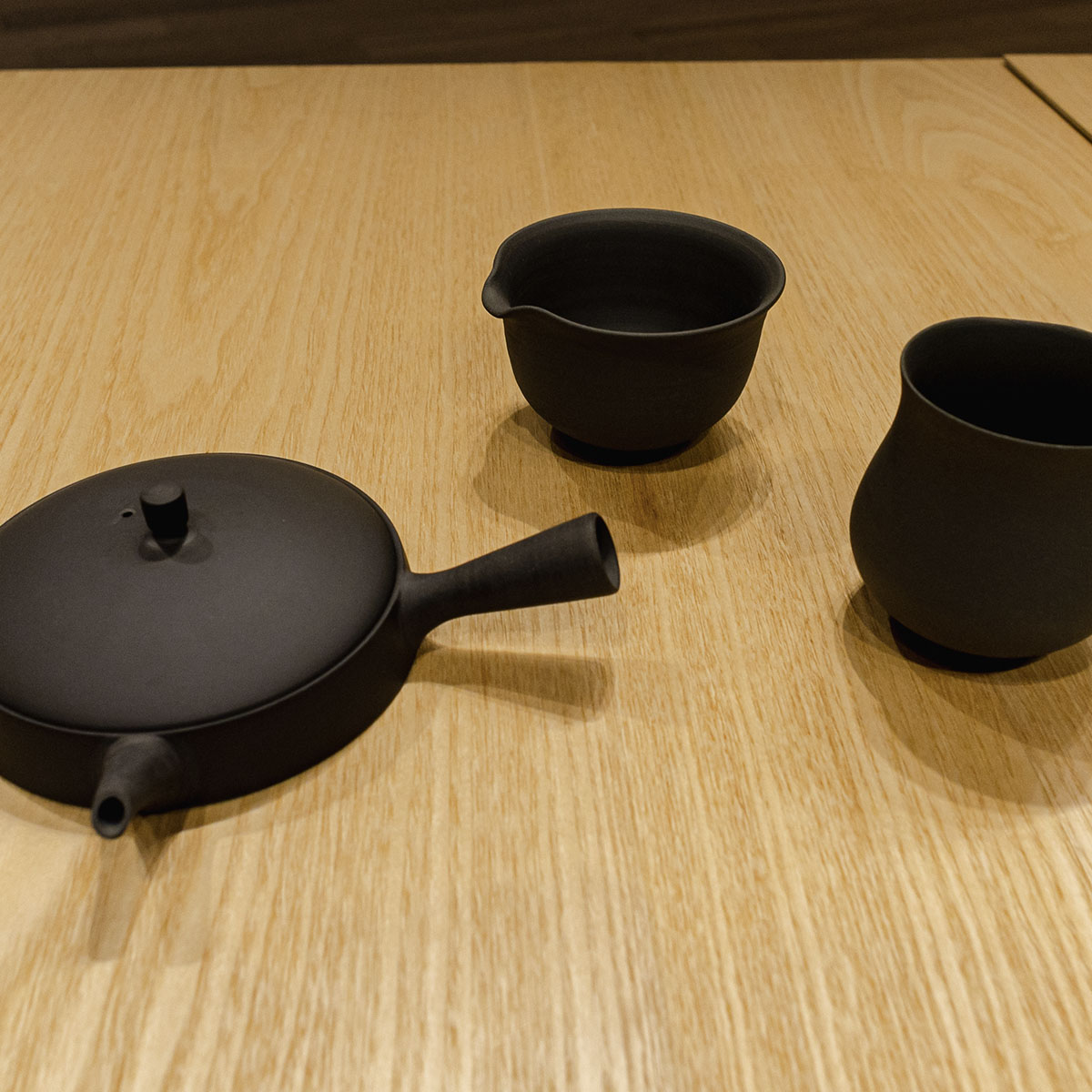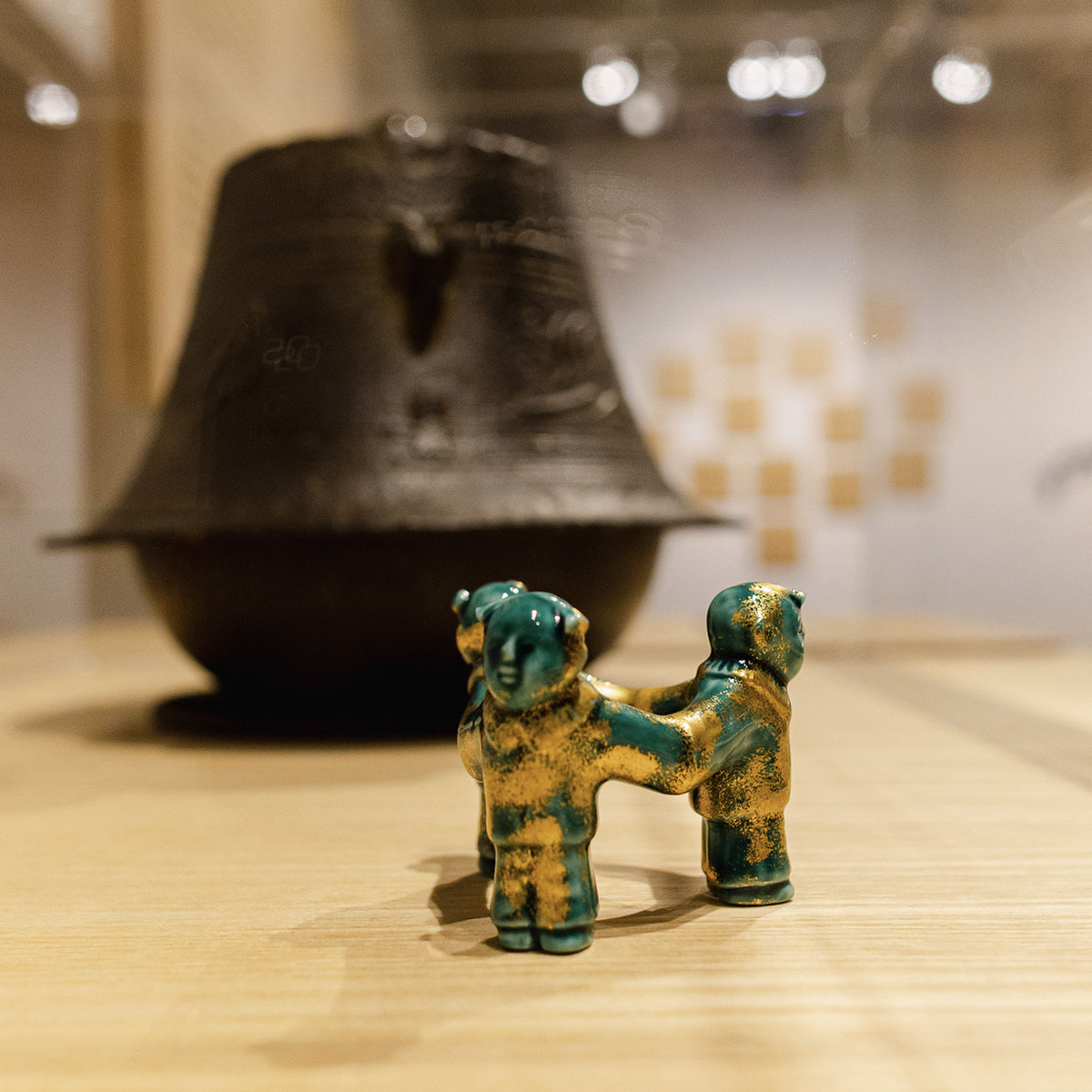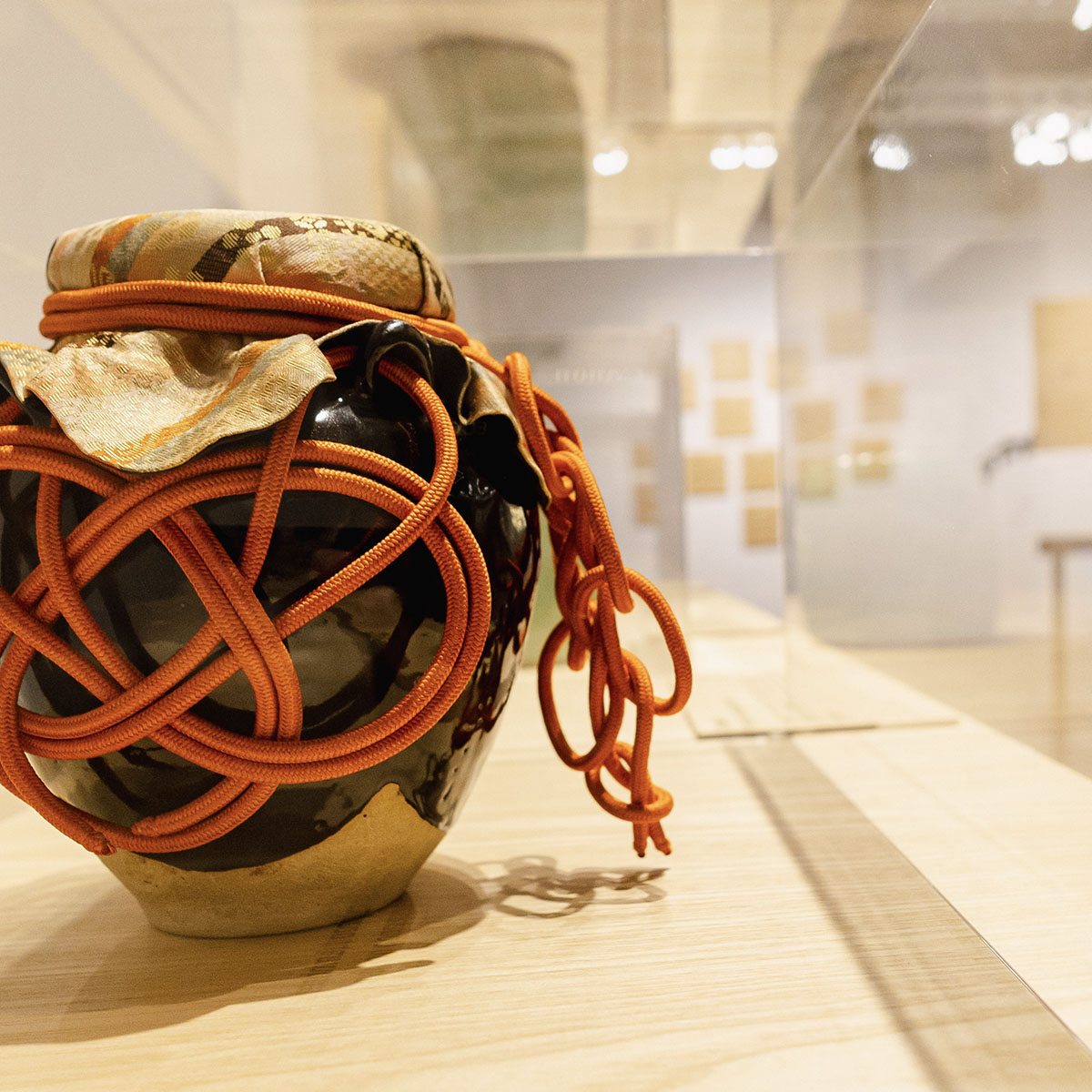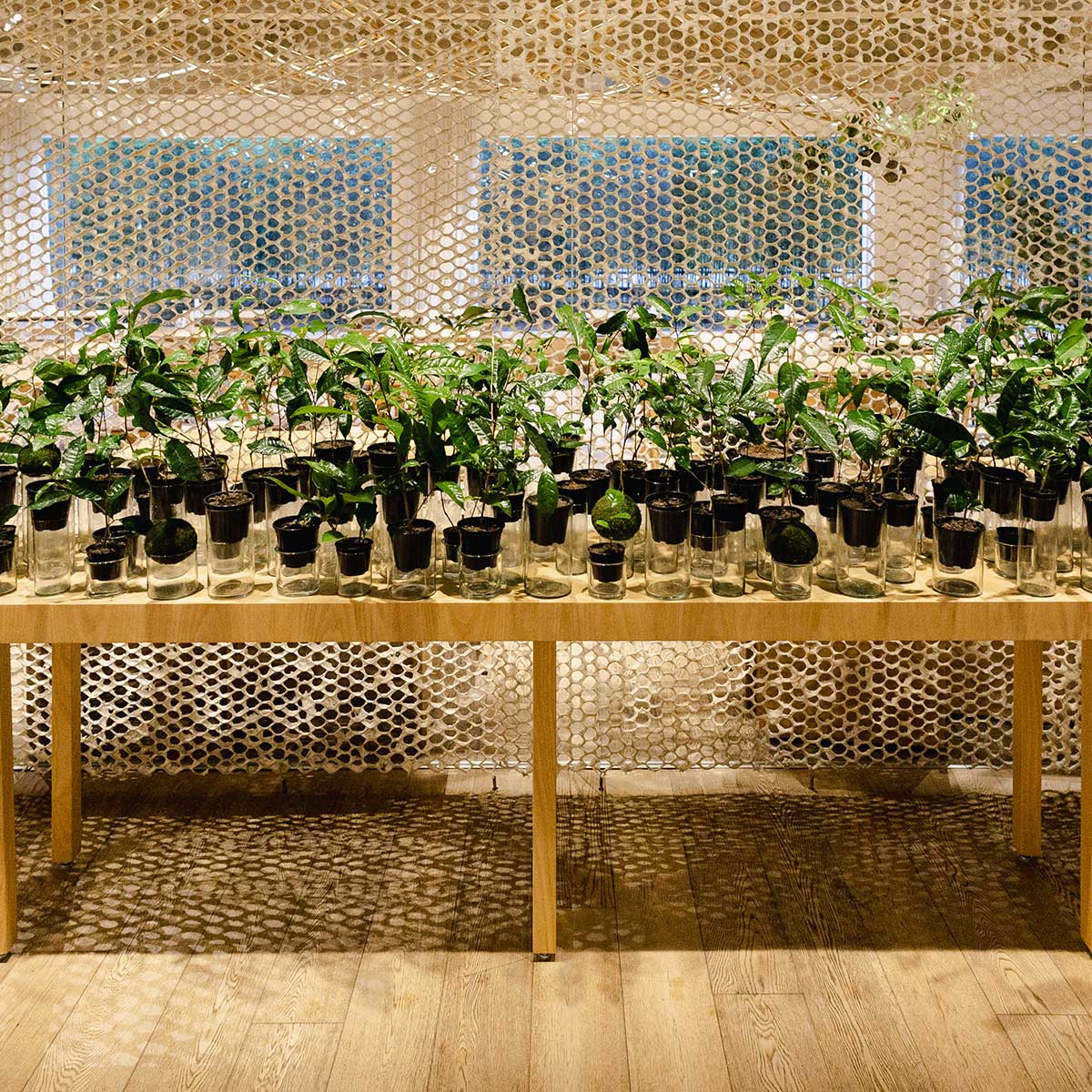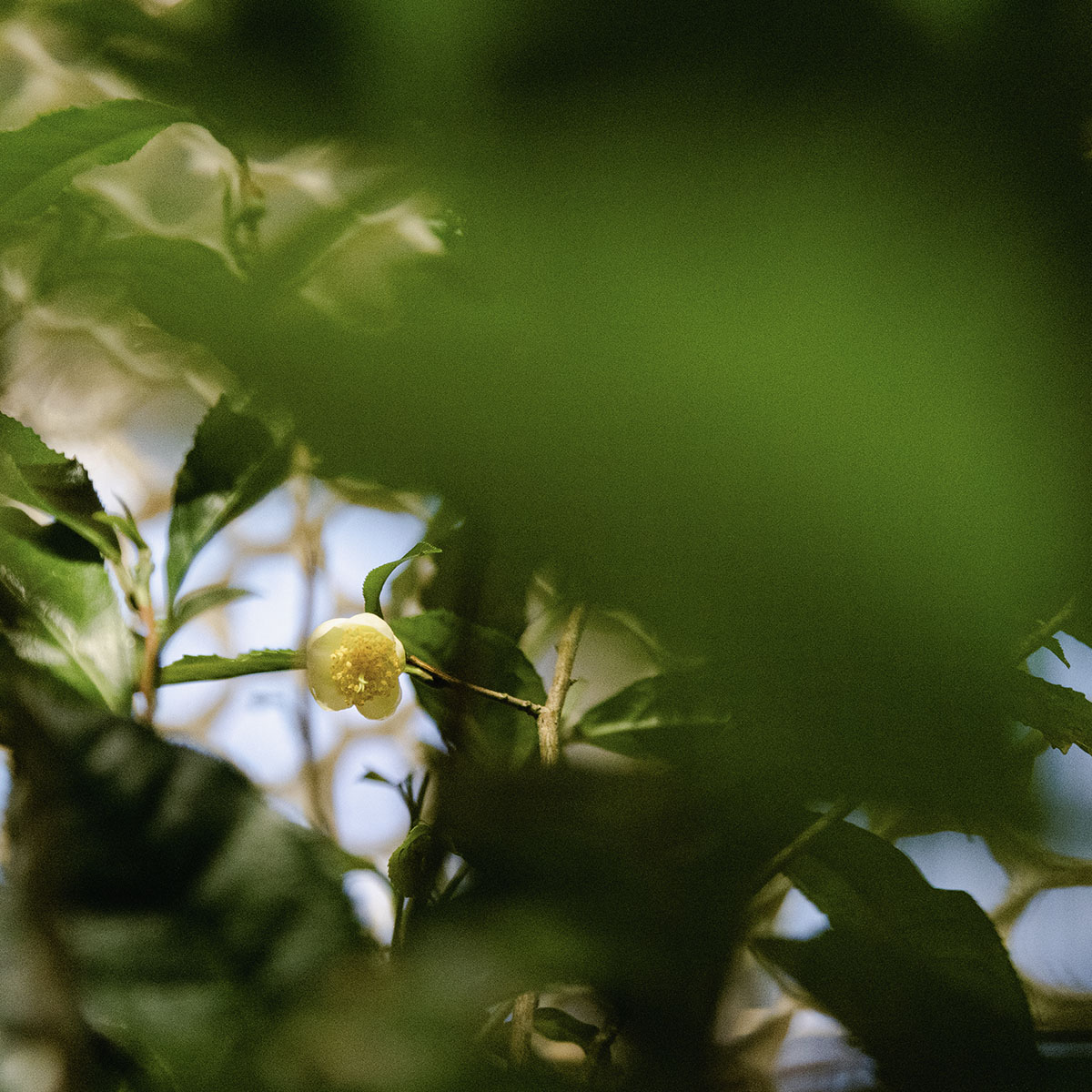- Date
December 05, 2023 to April 07, 2024
- Tuesday to Friday
from 10 am to 6 pm
- Saturdays, Sundays and holidays
from 10 am to 7 pm
- Fee
free admission
- Early booking (optional)
- The exhibition has accessibility features

Visit the exhibition with the virtual tour 360º
NIHONCHA: An Introduction to Japanese Tea
A symbol of Japanese culture, green tea transcends temporal boundaries, steadily amassing a growing global fanbase. Starting on December 5th, Japan House São Paulo welcomes the public to immerse themselves in the realm of Japanese tea at the exhibition “NIHONCHA: An Introduction to Japanese Tea,” with complimentary admission. Until April 7, 2024, the second floor of the institution situated on Avenida Paulista will showcase a comprehensive overview of Japanese tea production (also known as nihoncha).
The exhibition will feature samples of various tea varieties, the essence of cha no yu embedded in chadō, traditional and contemporary utensils crafted by Japanese designers, and a tea house conceptualized by a contemporary artist. Through a parallel schedule of chadō demonstrations, tastings, and seminars, visitors will have the chance to deepen their understanding of Japanese tea. This experience will provide diverse perspectives on how this traditional beverage can be seamlessly incorporated into everyday life.
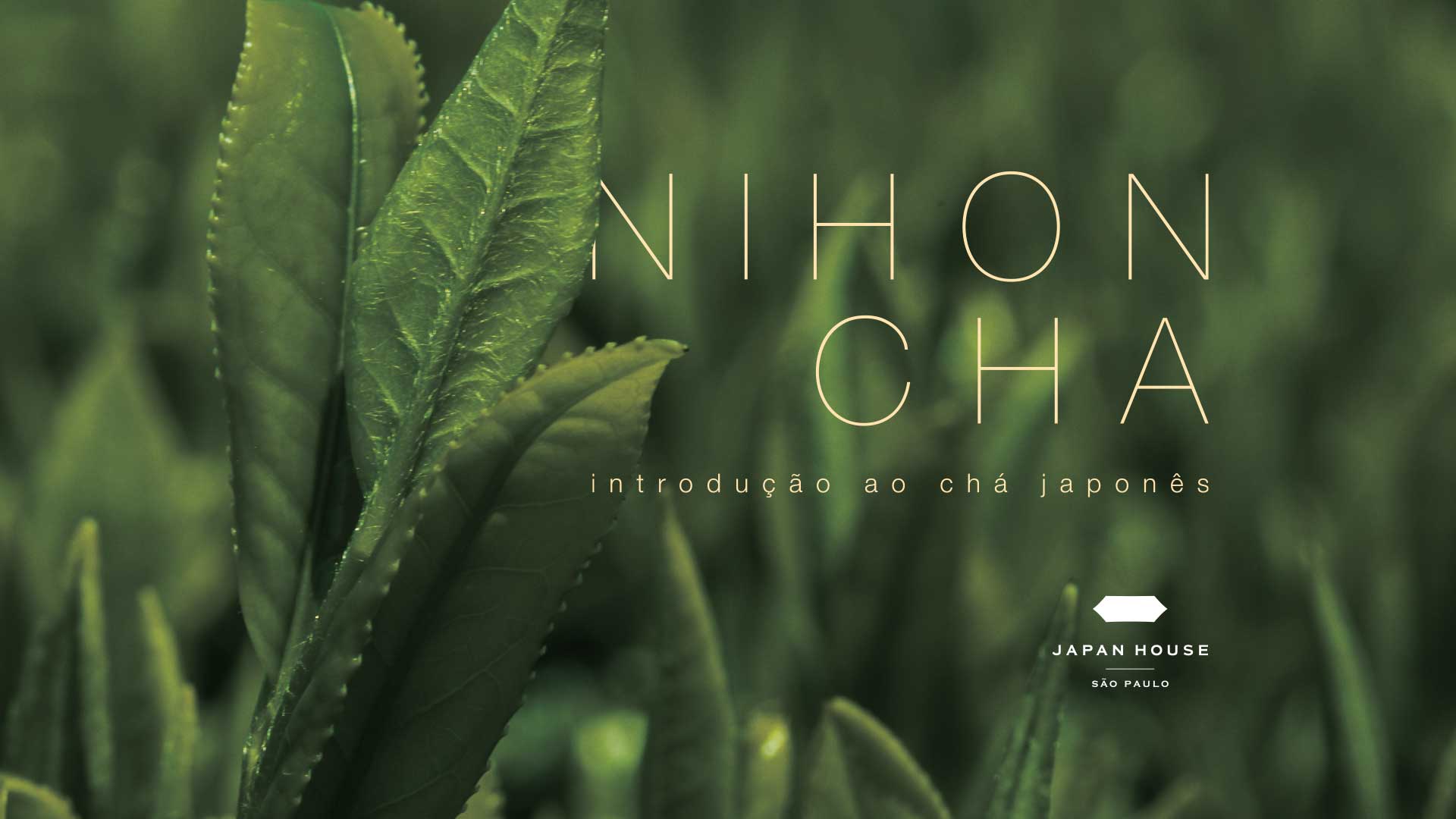
The TSUGINOTE TEAHOUSE
Curated by JHSP's Cultural Director, Natasha Barzaghi Geenen, and co-curated by Gabriela Bacelar, the exhibition introduces a novel element to Brazil - an unparalleled 3D-printed wooden structure. The TSUGINOTE TEAHOUSE, designed by Japanese architect Kei Atsumi and French architect Nicholas Préaud, marks the world’s first construction of its kind. Comprising over 900 pieces crafted from repurposed wood, the structure is assembled using fittings inspired by traditional Japanese architecture. This innovative approach enables the construction to stand without the need for glue, nails, or screws.
Chadō - tea ceremony
The exhibition also emphasizes the tea ceremony, (chadō, or tea path), an age-old tradition that harmonizes art, crafts, architecture, landscaping, philosophy, cuisine, calligraphy, poetry, and various other elements. From this tradition arises the philosophy of “ichigo ichie,” meaning “each moment or encounter is unique and valuable.” This philosophy embodies the spirit of omotenashi - Japanese hospitality that continues to be cherished in the world of tea ceremonies to this day.
Japanese aesthetics and the world of wabi sabi
In this segment of the exhibition, Japanese aesthetics and the world of wabi sabi are showcased through traditional utensils used in the ceremony. These items are generously provided by the Chadō Urasenke Center of Brazil, the official representative of its headquarters, the Urasenke Foundation, in Brazil - a prominent tea school in Japan.
"Nihoncha is a symbol that embodies Japanese culture and seamlessly integrates into daily life. The ritual of preparing and serving tea signifies a gesture of hospitality toward the guest, offering a moment of respite to savor time leisurely – a moment for contemplation or shared social engagement. Beyond its significance in unraveling various aspects of enduring traditional Japanese culture, this element finds utility in the realms of cuisine and the cosmetics industry. Numerous studies also highlight the manifold benefits associated with its consumption. Therefore, nothing could be more fitting than showcasing it as the star of an exhibition at Japan House São Paulo”, explains Natasha.
Japanese tea (nihoncha)
Introduced to Japan by Buddhist monks 1,200 years ago, tea was initially reserved for the upper classes of society. However, gradually, it gained wider appreciation and became an integral part of the country’s daily life among the general population. Evidence of this can be found in the numerous models of kettles, cups, and other designer items available in the market, including Zojirushi Corporation’s i-PoT electric kettle, featured in the exhibition. Crafted to seamlessly integrate into the daily lives of the elderly, it issues an alert to a family member or emergency contact if 24 hours pass without activation.
"Our purpose in showcasing it is precisely to underscore how tea permeates everyday life to the extent that people become concerned if a day passes without the kettle being turned on,” remarks the curator.
Japanese green tea (nihoncha) is traditionally served without sugar or sweetener, complementing Japanese cuisine by enhancing the natural flavors of the ingredients or offering a refreshing touch to the palate after a meal. Its distinctive color is naturally derived from the Camellia sinensis plant.
The initial segment of the exhibition delves into the intricate process of cultivating Camellia sinensis leaves, underscoring the substantial commitment and attention required from farmers. The production of tea with heightened umami - the fifth taste on the human palate - is influenced by factors such as the planting location, irrigation, sun exposure, pruning, cultivation methods, harvest timing, and processing techniques. Indeed, Camellia sinensis will take center stage in a botanical installation featured within the exhibition.
Japanese tea distinguishes itself from Chinese or English tea production methods. Following the harvest, the fresh tea leaves undergo steaming to prevent oxidation. This singular process contributes to the unique aroma, flavor, and color characteristic of Japanese tea. The leaves then are rolled and dried. During the second finishing stage, the leaves undergo sieving and cutting. Subsequently, each manufacturer employs its proprietary drying method to further intensify the aroma and flavor of the tea. This process is deemed so crucial that companies often guard it as a closely held secret.
The exhibition also includes samples of nine Japanese tea varieties provided by Yamamotoyama company. Despite originating from the same plant, each variety possesses distinctive processing characteristics that lead to varied flavors.
The following varieties will be presented: Gyokuro (recognized for its highest quality green tea with a rich concentration of umami); Kabusecha (to produce this variety, the plantation is covered for a shorter period than the previous type); Sencha (the most common tea in Japan); Houjicha (obtained by roasting Sensha over high heat); Genmaicha (a blend of toasted rice and Sencha); Mushisei-tamaryokucha (steamed leaves that are not shaped straight, giving it a rounded form); Kamairisei-tamaryokucha (similar to Mushisei, but with roasted leaves); Tencha (the only tea without molded leaves, used as raw material for matcha), and, finally, widely known worldwide, Matcha (powder made from Tencha, also used in the tea ceremony).
To extend the audience’s experience beyond the exhibition, JHSP has planned various supplementary activities throughout the exhibition period. These include Japanese tea preparation workshops, special tea ceremony editions, and lectures focusing on the effects of tea. Furthermore, there will be a workshop offered in collaboration with JETRO and abChá (the Brazilian Tea Association), specifically designed for businesses.
Accessible JHSP program
As part of the Accessible JHSP program, the exhibition “NIHONCHA: Introduction to Japanese Tea” provides tactile resources, audio descriptions, and sign language support.
![]()
--
Service:
Exhibition “NIHONCHA: Introduction to Japanese tea”
#NIHONCHA #ChaNaJHSP
Curator: Natasha Barzaghi Geenen e Gabriela Bacelar
Period: December 05, 2023 to April 07, 2024
Cost: Free admission
Cooperation: Ministry of Agriculture, Forestry and Fisheries, Chadō Urasenke Center of Brazil, Japan Tea Central Public Interest Incorporated Association, NPO Nihoncha Instructor Association, and Yamamotoyama Co., Ltd.
The exhibition has accessibility resources (Sign language, audio descriptions, tactile elements).
Early booking (optional): https://agendamento.japanhousesp.com.br
Japan House São Paulo | second floor
Location: Avenida Paulista, 52 – Bela Vista, São Paulo
Opening hours:
Tuesday to Friday, from 10 am to 6 pm
Saturdays, Sundays and holidays, from 10 am to 7 pm
Japan House São Paulo remains closed on Mondays, without exception, including on holidays.


